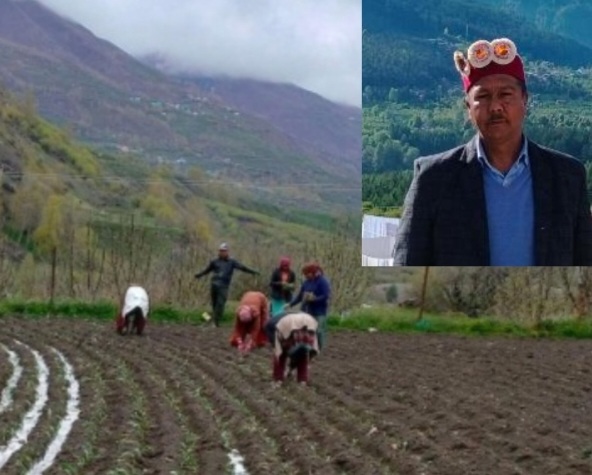From Humble Roots to High Profits: A Lahauli Farmer's Journe in the rugged terrains of Lahaul-Spiti, where survival depends on the whims of nature...
Udaipur: Rajender Thakur from Udaipur has always admired people who have had the courage to break away from their humdrum lives and start something new.
Or those who have returned to their roots with fresh ideas and have not shied away from trying new things.
“The cauliflower is reaping me a turnover of Rs 3-5,00,000, which wasn’t possible if I had continued cultivating staple crops like potato and millet’s . The trick lies in sowing the crop when the demand is at its peak “
Thakur's family owns 20 bhiga of land in village, about 50 kilometres from Keylong district headquarter, and he leases another 2 bhiga in the village to cultivate cauliflower for two months in a year.
In the other months he grows millets and seasonal vegetables. Cultivating different crops keeps the soil healthy and he earns handsome profit too.
"I talked to my family about diversifying our crops as even after years of labour we were not getting much profit. Cultivating seed potatoes and peas just ensured that we have enough food to eat round the year".
But what about expenses for education, fertilisers and insecticides? My family agreed with my proposal to change over to other more profitable crops,” Rajender said.
The young farmer assessed the vegetable markets in Chandigarh and Delhi sabji Mandi and took stock of the prices in various seasons.
He finally zoomed in on cauliflower as the produce best suited for the soil in his field.
“I realised that the secret to getting good profits from the vegetables is by sowing it at a time the demand is about to peak. Sowing a month early or a month late can make a big difference and the farmer needs to have market insight from the traders,” he said.
After talking to wholesale traders of vegetables, the 49-year-old decided he would grow cauliflowers.
He realised the thing to do was sow cauliflower in enough time so that they are available in the markets long before the autumn/winter months (when markets are flooded with cauliflower).
Thakur found that July-August recorded the highest wholesale prices for cauliflower — Rs 90 -120 a kilogramme.
“I sowed the seeds in April. It takes at least two months for the cauliflower to ripen and grow to its full size.
This way I was ready with my harvest in July and August when sale prices are at its peak in North India,” he said.
Overcoming Initial Hurdles
The switch to growing cauliflowers was not easy. Initially, in 2010, the output was less than satisfactory. The cauliflowers were small and of inferior quality.
“We were ridiculed. Told we should not have overreaching ambitions.
It was disheartening but it motivated me to do even better next year. We realised that our sowing was premature.
We should have waited for mid-April before planting,” the young farmer said.
Next year, Raju sowed the seeds after consulting with scientists at the Krishi Vigyan Kendra in Kukumseri.
The results were far better and there were good lessons learnt, smiledThakur.
Till 2016, he cultivated cauliflower on two bhiga of land but from 2017 onwards, his family expanded cultivation to another three bhiga of land.
“In 2016, we earned profits worth Rs 1,50,000. The villagers who laughed at us stopped laughing. Today, we earn annual profits up to Rs 5,00,000 by working two-three months,” he added.
 (Sudarshan Thakur is a lawyer, a writer and an environmental activist from Lahaul-Spiti)
(Sudarshan Thakur is a lawyer, a writer and an environmental activist from Lahaul-Spiti)






